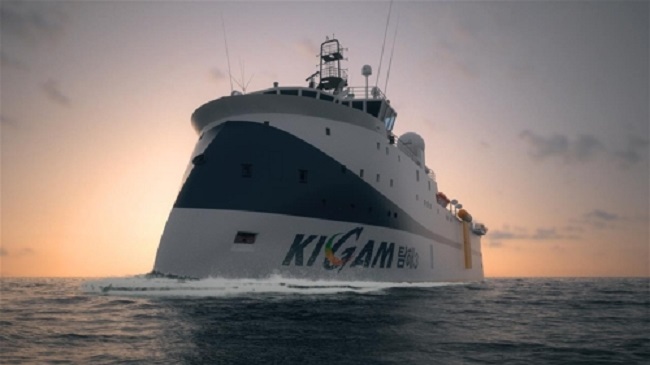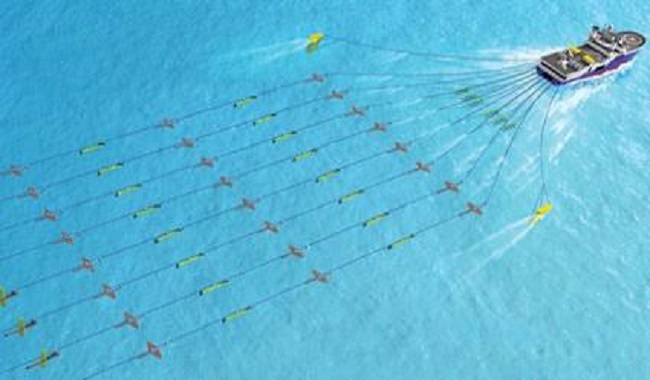
The Korea Institute of Geoscience and Mineral Resources announced on the last day of August that plans for the construction of a ship equipped with cutting-edge technology destined to detect offshore petroleum reserves were given the go ahead by the government. (Image: Yonhap)
DAEJEON, Sept. 1 (Korea Bizwire) — The Korea Institute of Geoscience and Mineral Resources announced on the last day of August that plans for the construction of a ship equipped with cutting-edge technology destined to detect offshore petroleum reserves were given the go ahead by the government.
The vessel will also possess onboard capabilities allowing for environmental research on climate change.

The main feature of the ship will be its “Seismic Wave Emitting Streamer”, a six-kilometer-long technological marvel that will drag behind the vessel like a cow pulls a plow. (Image: Yonhap)
The main feature of the ship will be its “Seismic Wave Emitting Streamer”, a six-kilometer-long technological marvel that will drag behind the vessel like a cow pulls a plow. The streamer will record the activity of signals emitted underwater.
The construction process will take five years and cost 172.5 billion won.
The ship will be the third iteration of its kind, replacing its deteriorating 2,000-ton predecessor which was commissioned in 1996.

The ship will be the third iteration of its kind, replacing its deteriorating 2,000-ton predecessor which was commissioned in 1996. (Image: Yonhap)
S.B.W. (sbw266@koreabizwire.com)






